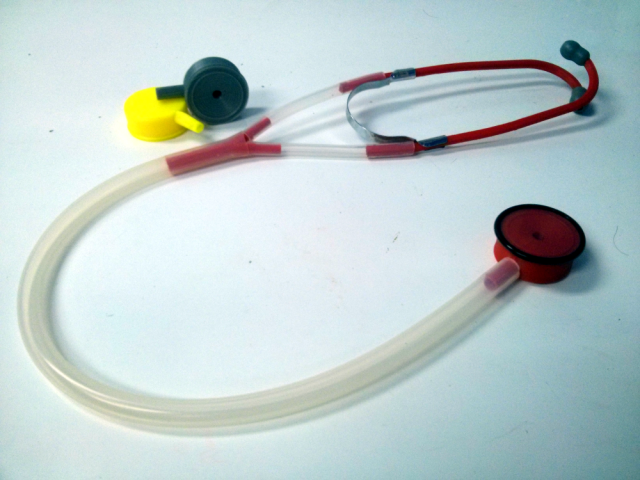An affordable plastic stethoscope

A team of Canadian researchers has developed a clinically-validated open source model for 3D printing very affordable plastic stethoscopes in under three hours.
Intended for regions of the world with limited access to medical supplies such as conflict areas and underdeveloped areas, this device is the first clinically-validated open source 3D-printed medical device. Christened Glia, it was designed in 2015 by a Canadian-Palestinian doctor named Tarek Loubani while working in the emergency department of Gaza’s main hospital.
The idea of using 3D printing came to him upon returning from Ontario, while playing with his nephew’s plastic stethoscope. Surprised to find that it worked as well as a real steel stethoscope, the young physician joined up with a team of Canadian researchers at the Western University of Ontario to create a plastic prototype that could be manufactured anywhere using a 3D printer. According to them: “this innovation is important as it makes it possible to introduce two new factors to reduce costs, reduce the use of plastics, and using 3D printing as an alternative to metal”.
The stethoscope was designed using free and open source software, enabling physicians working in regions affected by war and low-income regions to easily obtain one. The Glia model can be manufactured in under three hours and only costs $ 2.50 to produce. An ordinary FDM desktop 3D printer and a spool of ABS plastic thread are all that is needed to create the implement. The rest of the equipment comprises silicone tubes of the type used in soda machines and plastic diaphragms. After being tested in a clinical setting, it was found that Loubani’s stethoscope had the same acoustic properties as those sold on the market at ten times the price.
Although Glia is not a vital and indispensable tool for performing diagnostics in hospitals equipped with ultrasound, scanners and other technologies, it is very valuable in poor regions and conflict areas.
Currently used by Gaza’s physicians and allied health professionals, the Glia stethoscope is also used at the London Health Sciences Centre (LHSC) in Ontario. Based on this initial success, the team of researchers is planning to create other medical devices such as otoscopes and tourniquets to overcome the lack of equipment in certain situations.





